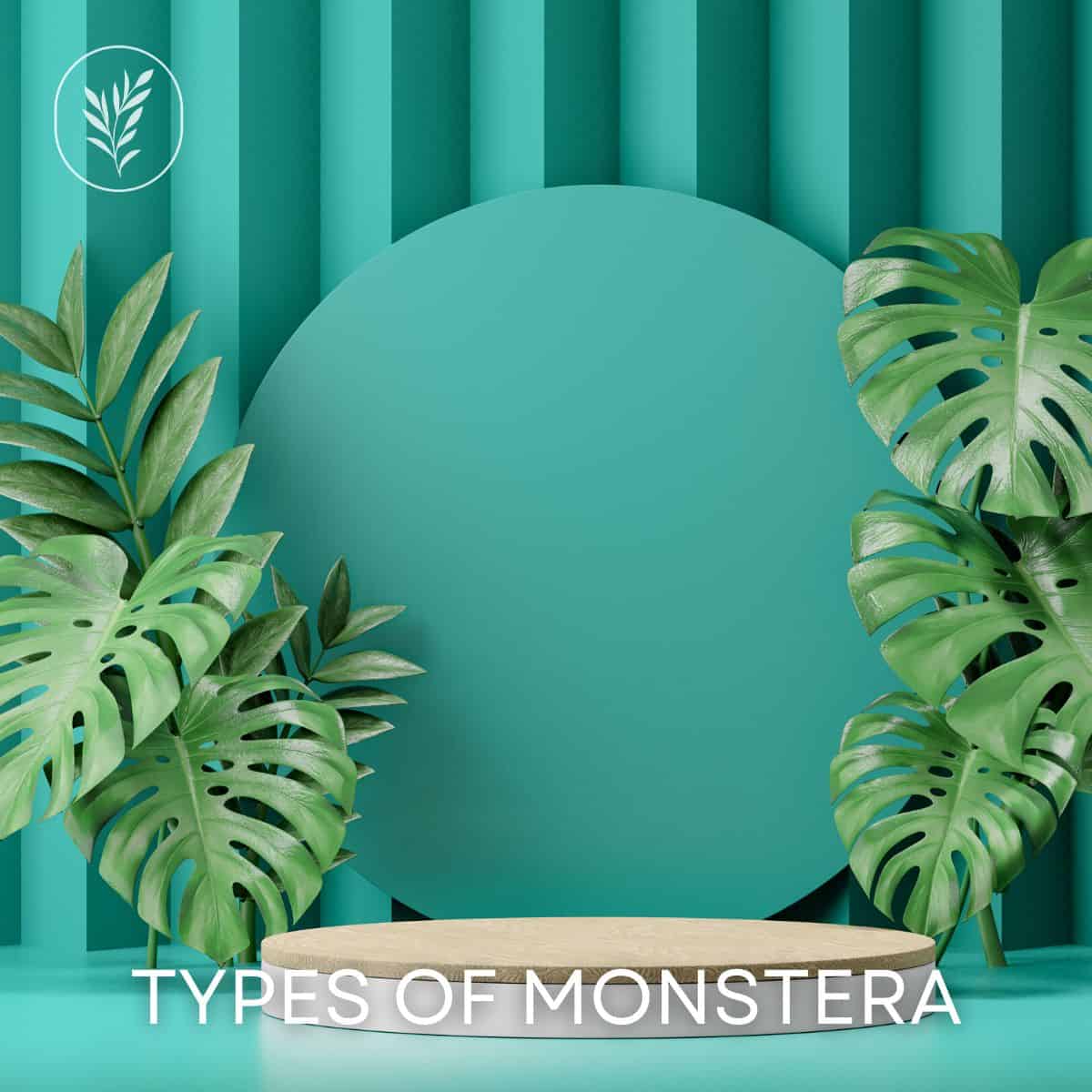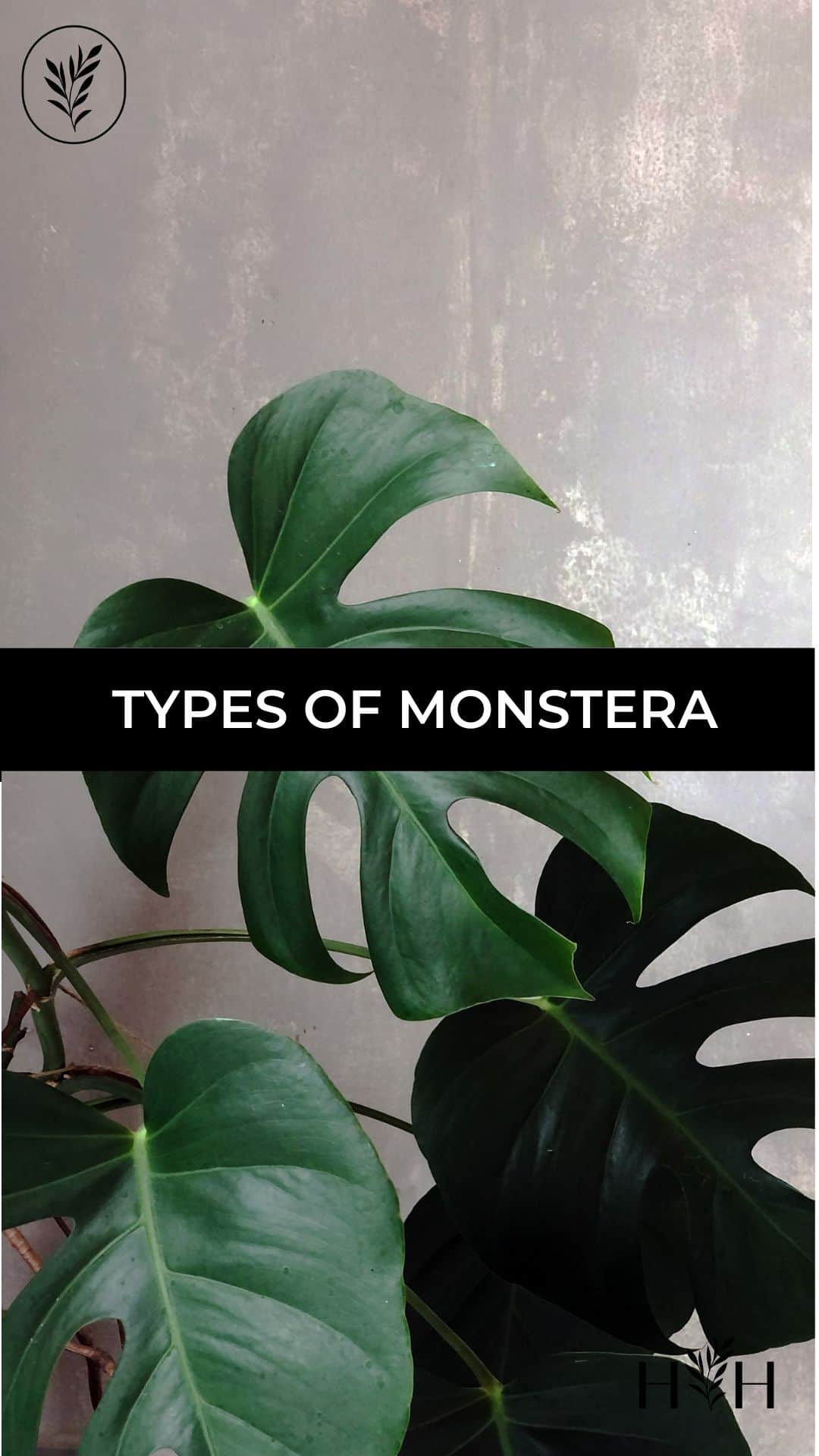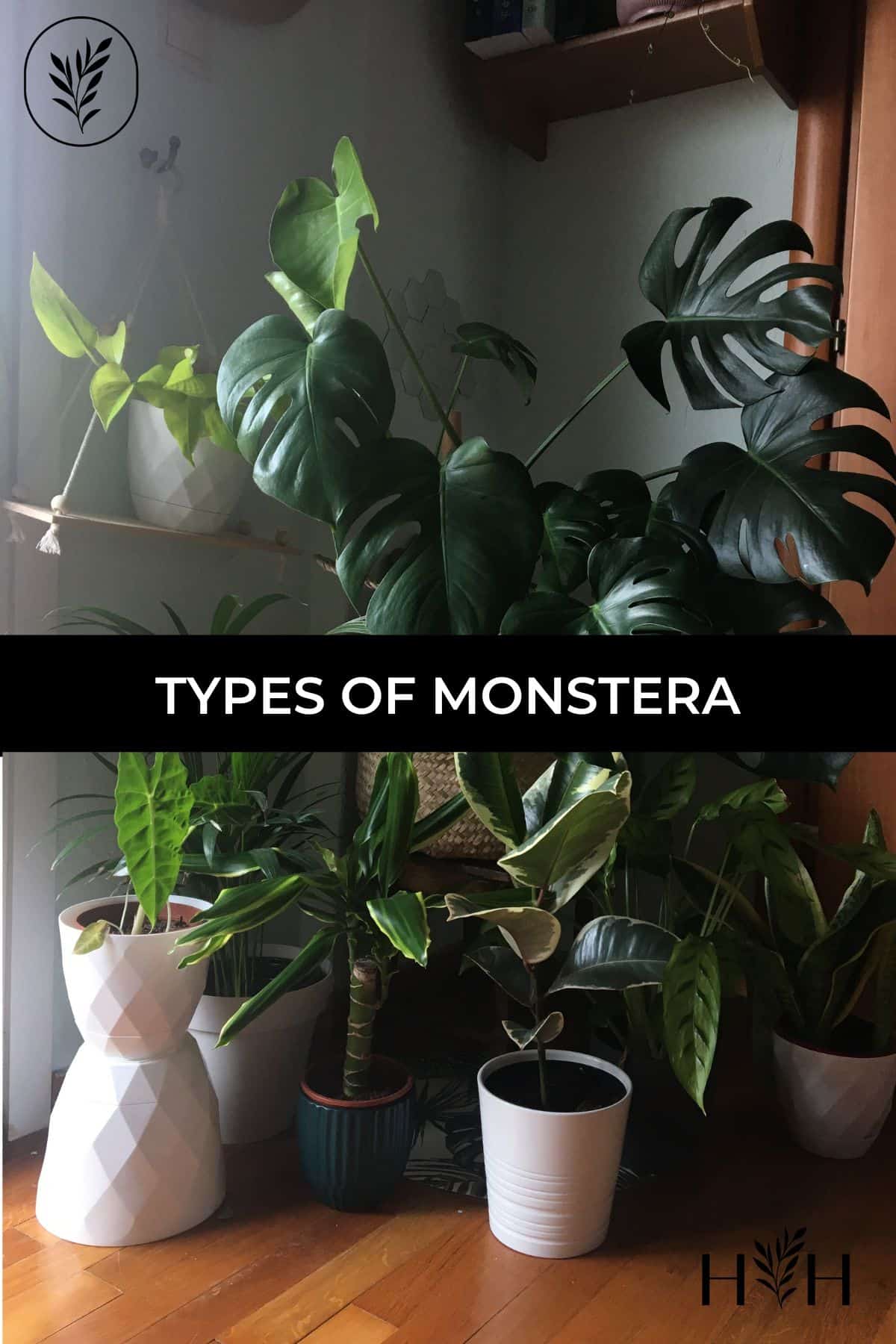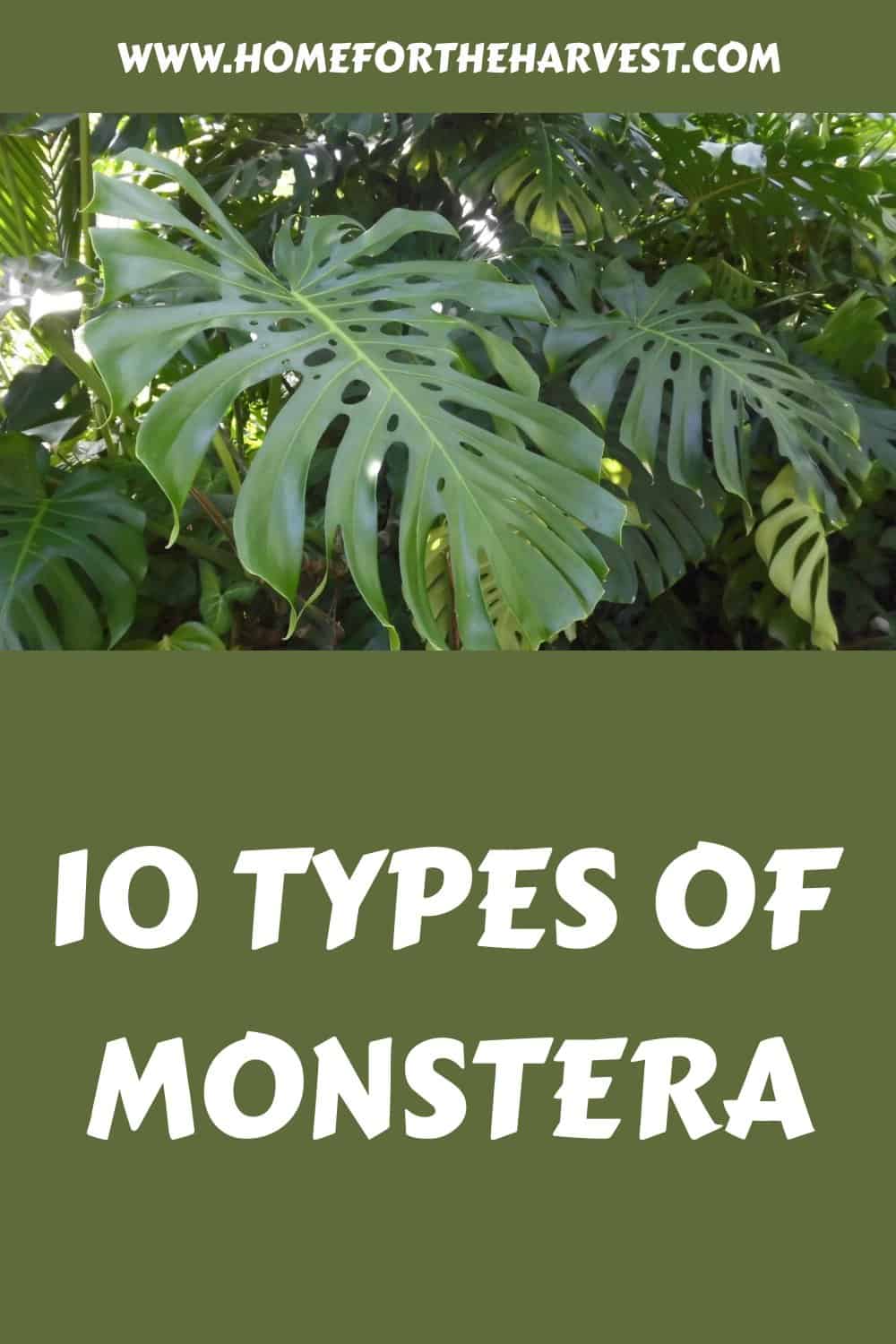Even if you’re not a plant lover, you’ve likely heard of Monstera plants as they are a popular household plant. However, you may not have known that there are many species of Monstera. There are roughly 49 types of Monstera plants (see a list of all 49 species here), but you will only likely find a handful in your local nursery. Let’s look closely at 10 of the most popular types of Monstera plants!
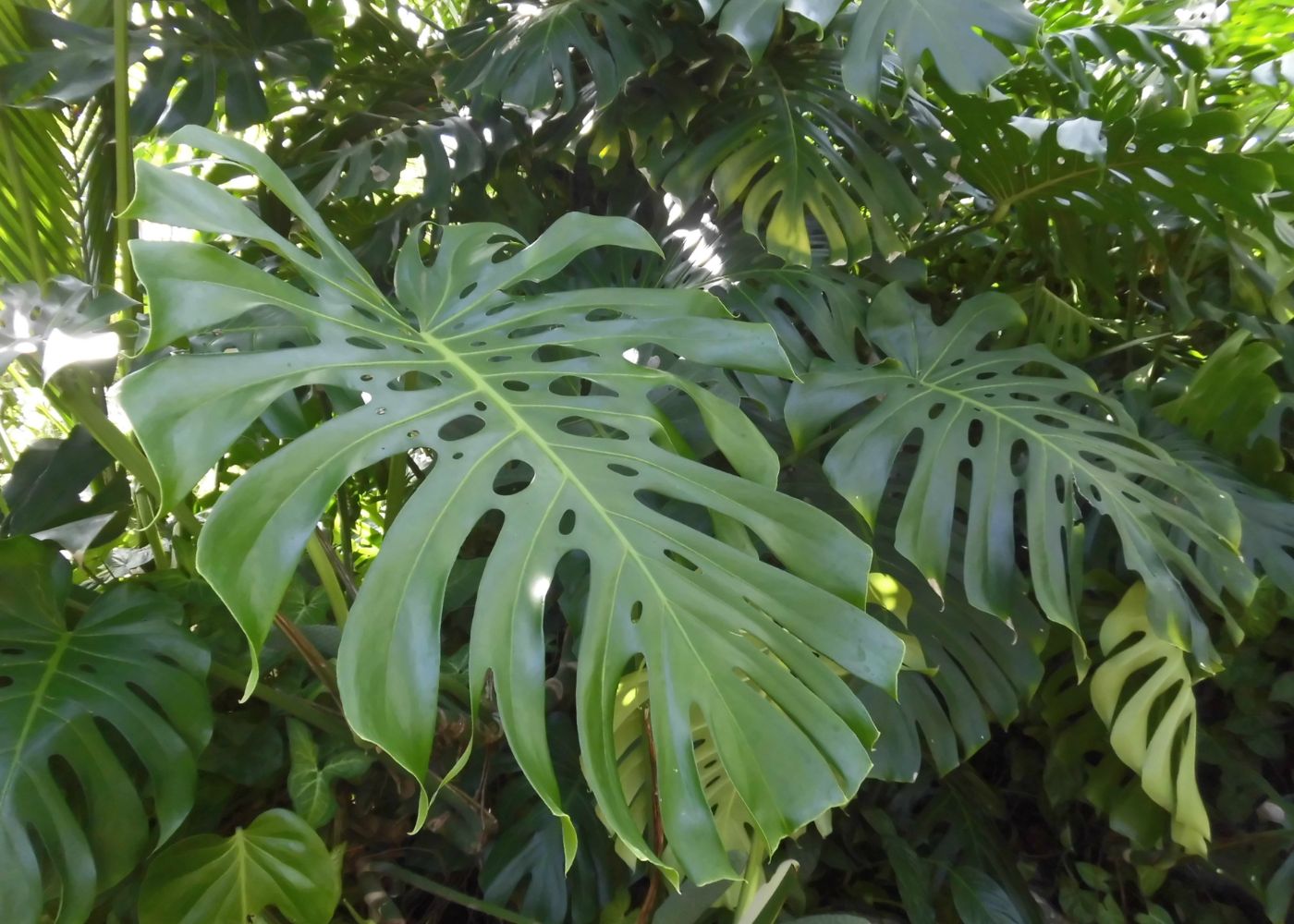
1. Monstera deliciosa
The Monstera deliciosa is a plant with many nicknames. As funny as this may sound, another common name for this plant is the swiss cheese plant. Why is it called the swiss cheese plant? It’s due to the nature of this particular plant’s large leaves and the holes throughout them. Just like swiss cheese is known for holes in its blocks or wheels. This Monstera plant is a flowering plant that is native to the tropical forests of the southern regions of both Mexico and Panama. They can also be found in other tropical environments like Hawaii as well.
The Monstera deliciosa plant can grow up to 66 feet tall in nature! Its leaves are big, green, and glossy—often growing at three feet in length and about 30 inches wide. The holes within its leaves are called fenestrations on mature plants. This is not an uncommon trait to many Monsteras. In the right conditions, these plants flower and produce a fruit called the Monstera fruit or the Mexican breadfruit. This fruit is notoriously shaped like corn but behind its skin, it reveals a sweet-tasting fruit that tastes like a mix between a pineapple and a banana.
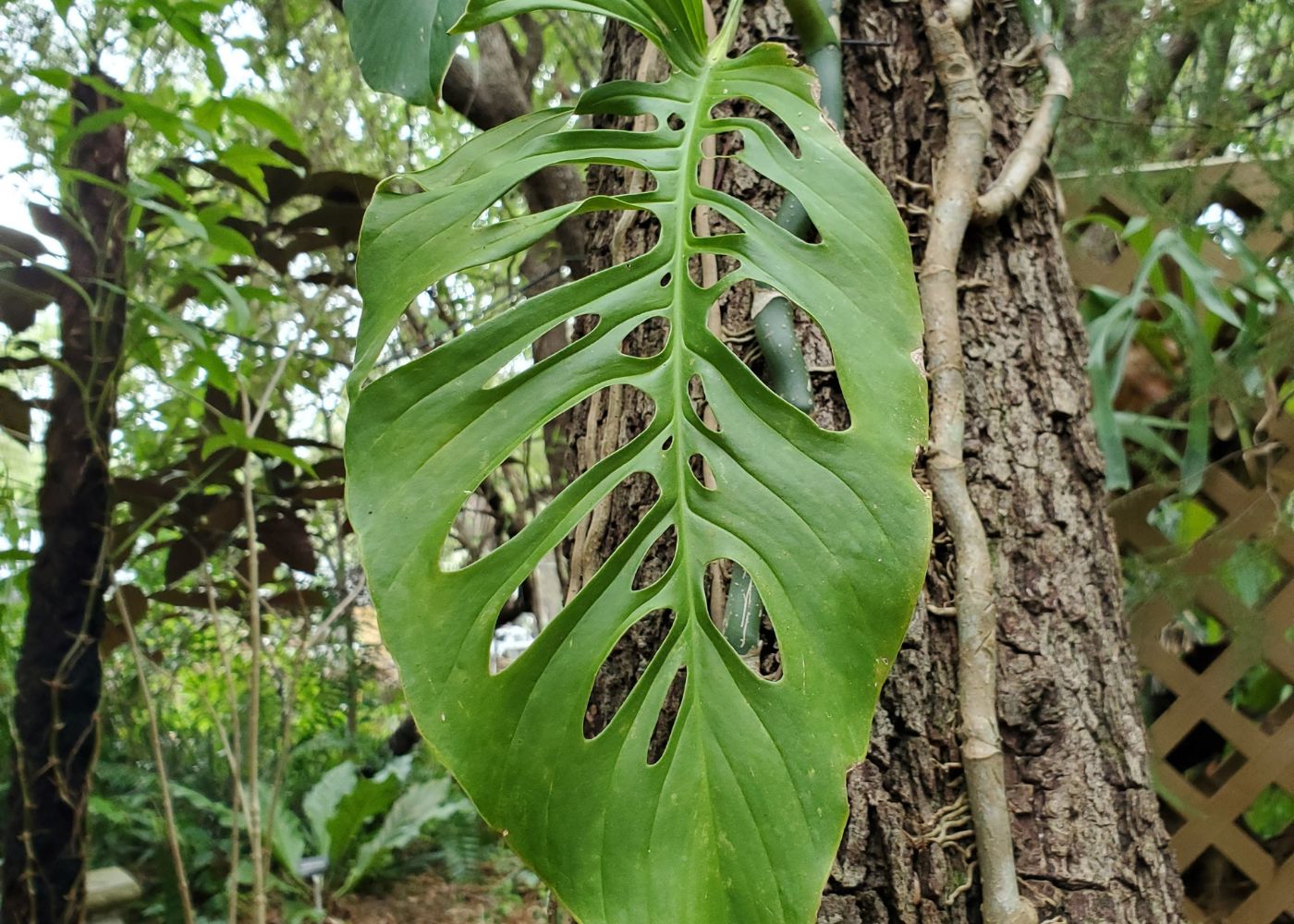
2. Monstera adansonii
Monstera adansonii is another plant considered a “swiss cheese plant” given the nature of its many holes. It’s also known as the five hols plant. It’s another flowering plant from South America but can now be found in Central America as well. It can grow up to five feet tall as a houseplant but up to 13 inches outdoors as a vine.
The great thing about this plant is that it’s low maintenance in terms of care and it grows fast regardless. Like most tropical vining plants, it will thrive with indirect light and to never be completely dry. You’ll want to water it as soon as the top inch feels dry. Also, if you want to place it next to something to grow along with, it will help it grow to a larger height, but also works fine hanging as is.
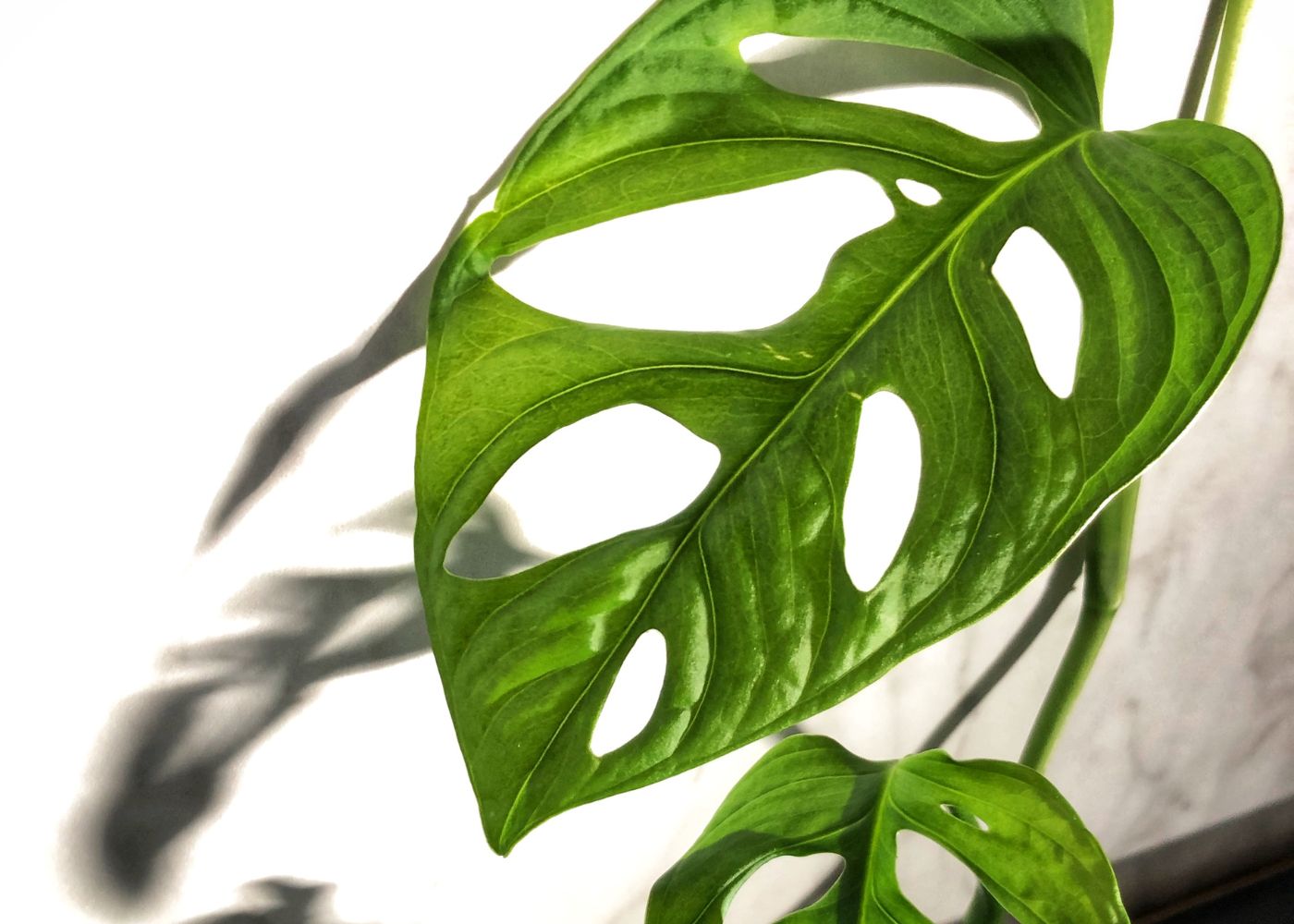
3. Monstera obliqua
Like many of the Monstera species, the Monstera obliqua is also native to South America and can also be found in Central America. This plant is infamous for having such large holes with open space that there is more empty space than an actual leaf about it. This is an extremely rare Monstera plant that is highly sought after and difficult to obtain. Beware of adansonii species labeled as obliqua!
If you are willing to put in the work of obtaining one and paying the high price, you won’t likely find it in your typical garden center or online plant shops. You will likely have to seek out a private grower or collector. As you can imagine, and like I said before, this is going to cost you. This is not a plant for a plant lover on a budget.
Once you do get your hands on one, you’re going to need to make sure it is thriving in a humid environment. These leaves are incredibly delicate and are meant to be kept supple or they will easily dry and crumble—ruining your pride and joy. Most rare plant collectors keep them in a climate-controlled chamber like a dedicated glass plant cabinet.
4. Monstera dubia
The Monstera dubia is one of the lesser-known plants of the genus Monstera family. They are native to both Central and South America. This plant is most known for its beautiful transformative nature. When in its natural environment and it reaches its full maturity, it will grow up into the canopy and will transform once it’s exposed to the bright sunlight.
Compared to the other Monsteras we’ve already covered, this plant’s leaves are smaller and heart-shaped that offer both dark and light patches of green. They grow up to three feet tall indoors but can grow up to 10 feet tall outdoors. This plant thrives in partial shade and prefers moist but well-drained acidic or neutral soil.
5. Monstera borsigiana
Many people ask, is Monstera borsigiana the same as Monstera deliciosa? Some experts consider them the same, and list Monstera borsigiana as a synonym for Monstera deliciosa. Other experts consider Monstera borsigiana to be a subspecies or separate closely-related species of Monstera deliciosa, for instance, Monstera deliciosa var. borsigiana.
For those that consider the species distinct, the geniculum can be examined to tell the diference. This is the part of the stem that widens and attaches to the leaf. The geniculum of mature Monstera deliciosa leaf stems have wrinkles/ruffles, while borsigiana variations do not.
These plants can grow well both indoors and outdoors, and if you give them support, they will climb with the help of aerial roots. You can stake them easily with a monstera moss pole. An average indoor plant only grows about six feet but they can grow taller in an outside environment.
A Monstera like this one is very low maintenance and you will only need to generously water it once or twice in the summer and only one deep watering, if you’re in the winter months, will do. In terms of toxicity, these plants are known to be unsafe for children and animals so be sure to keep them far away to avoid any kind of potential digestion.
6. Monstera peru
As you may be able to gather from its name, the Monstera sp. Peru is native to the tropical regions of Peru. This means it requires a warmer atmosphere, high humidity, and partial shade to not only thrive—but to survive.
Monstera Peru, also known as Monstera karstenianum (unofficial botanical Latin) is a climbing plant, so for best results, pair it with something it can climb. However, this tropical plant can often be found in a hanging planter so its vining nature falls over the edges like a waterfall. Like other Monsteras, these plants are toxic to pets. So if you have cats or dogs, especially ones with a curious and playful nature, you’ll want to keep them far away.
7. Monstera pinnatipartita
The Monstera pinnatipartita is a rare plant of the monstera species. It’s a flowering plant in the genus Monstera family that’s also a beautiful climber. It’s native to South America, specifically found in the tropical rainforests of Columbia, Ecuador, and Peru. Although it can also be found in Central America as well. In its natural habitat, it can grow up to 33 to 66 feet tall however this can take over a decade. As a houseplant, these can reach up to six feet in the right conditions. As mentioned prior, they are climbers, so if you give them a trellis or something to climb, it will!
The Monstera pinnatipartita are similar to the Monstera deliciosa in that they both are green, heart-shaped, and become fenestrated when mature. This Monstera tends to create deep splits rather than just create slots or holes within its leaves. This species specifically needs indirect light, even moisture, moderate temperature, and loves humidity. You can wait until its soil is nearly completely dry before watering it again. However, the amount of water will depend on temperature and how much light it’s getting in its current location. If you’re overwatering its leaves will turn brown.
8. Monstera acuminata
The Monstera acuminata is another shingle plant and also a flowering plant. This is another incredibly rare tropical climbing plant but it can be found in abundance in Mexico, Petén Guatemala, Belize, Honduras, and Nicaragua. It can be found in Central America but is certainly not as common. It generally grows on the ground hoping to find something it can climb!
A fascinating fact about the Monstera acuminata is that they can grow close to 100 feet in the wild but will only grow at most to 8 feet in your home. They only need to be watered once a week but also need to be well-drained. Another unique fact about this plant is that it’s known to have air-purifying properties, having the ability to remove certain toxins from the air.
9. Monstera standleyana
The Monstera standleyana is a flowering plant that can be found in Honduras, Nicaragua, Panama, and Costa Rica. They are known to be a rare, exotic Aroid climber. They can do well both inside and out. If you’re looking to grow them inside, they make a great addition to hanging planters.
These plants prefer light and like most Monsteras require well-drained soil and are also toxic to animals. You only have to water this plant when you begin to feel the surrounding soil dry. You never want it to get entirely dry; it should always be slightly damp. However, if you overwater this plant the roots will become waterlogged and develop a rot called “wet feet” which will eventually kill your plant. Make sure the roots have oxygen if you want this plant to live its best life!
10. Monstera siltepecana
Silver Monstera, Monstera siltepecana, is rare amongst its plant family. It’s referred to as silver because the leaves are said to have a silver hue to them. As a young plant, this Monstera has small, full leaves, but as it matures it will become near recognizable once it’s grown. Once it’s grown the leaves will become darker and often form the holes Monsteras are known for.
These plants do well in shade or partial shade. This is another great hanging plant. You will need to ensure the soil never goes entirely dry between watering. If you really want to see this plant do its best, give it something to climb!
Now that you’ve learned about different Monstera varieties, you’ll be able to decide which varieties to grow in your home and garden. I love the look of these giant plants. I hope they bring a smile to your face seeing them in your living space!


